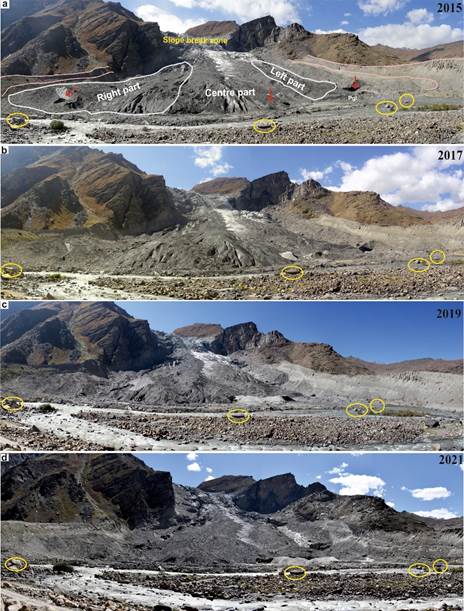The Parkachik Glacier in Ladakh is likely to have three lakes of different dimensions due to subglacial over-deepening — a characteristic of basins and valleys eroded by glaciers, shows a new study. Considering their sensitivity and as a most direct and apparent visible indicator of regional climate change, Himalayan glaciers have been subjected to numerous studies, from field-based investigations to the modern state-of-the-art remote sensing approach, for more than a century.

In contrast, understanding the ice thickness and distribution is foremost required for the Himalayan glaciers. However, existing approaches, like remote sensing, cannot directly estimate the glacier thickness. Based on ground penetrating radar, very few studies have been carried out on glacier thickness in the Indian Himalaya. Scientists from Wadia Institute of Himalayan Geology, an autonomous institute under the Department of Science & Technology (DST), GoI carried out a study that describes the morphological and dynamic changes of Parkachik Glacier, Suru River Valley, Ladakh Himalaya, India.
The findings were published in the journal ‘Annals of Glaciology’. The team of Scientists lead by Dr. Manish Mehta used medium-resolution satellite images; CORONA KH-4, Landsat, and Sentinel-2A from 1971–2021, and field surveys between 2015 and 2021. In addition, they used the laminar flow-based Himalayan Glacier Thickness Mapper and provided results for recent margin fluctuations, surface ice velocity, and ice thickness, and identified glacier-bed over-deepening.
The results revealed that overall the glacier retreat varied between 1971 and 2021. The remote sensing data shows that the glacier retreated with an average rate of around 2 ma−1 between 1971 and 1999 whereas, between 1999 and 2021, the glacier retreated at an average rate of around 12 ma−1. Similarly, the field observations recorded through day-to-day monitoring suggest that the glacier retreated at a higher rate of 20.5 ma−1 between 2015 and 2021.
Both the field and satellite-based observations indicate that the calving nature of the glacier margin and the development of a proglacial lake may have enhanced the retreat of the Parckachik Glacier. Furthermore, the surface ice velocity estimated using COSI-Corr on the Landsat data Surface was found to be around 45 ma−1 in the lower ablation zone in 1999–2000 and 32 ma−1 in 2020–2021, thus reducing by 28%. In addition, the maximum thickness of the glacier is estimated to be around 441m in the accumulation zone, while for the glacier tongue, it is around 44 m. The simulation results suggest that if the glacier continues to retreat at a similar rate, three lakes of different dimensions may form due to subglacial over-deepening.
Large Zoo In Himachal Pradesh: World-Class Facility Boosting Tourism And Wildlife Conservation




